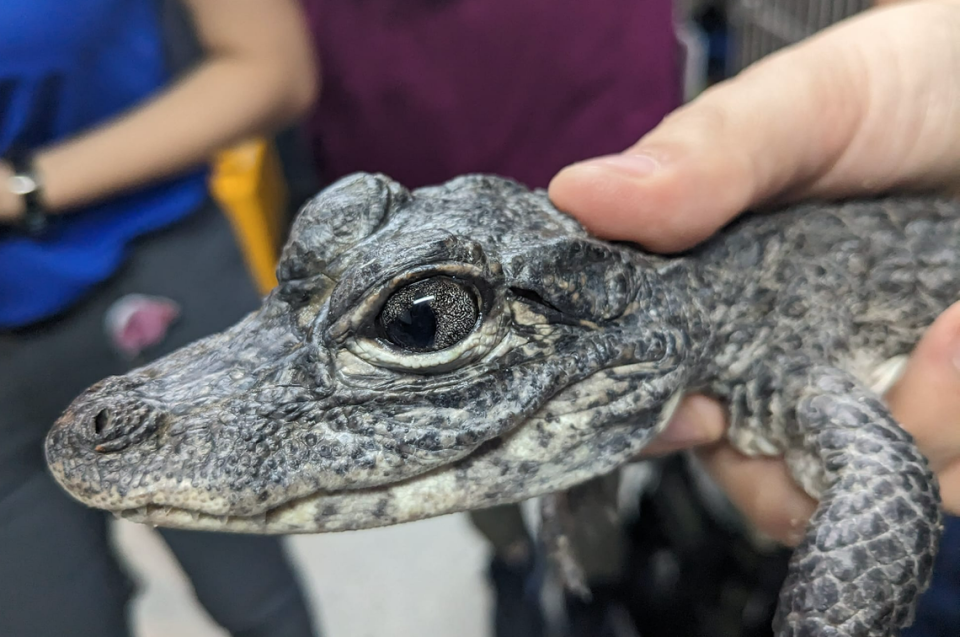What reptile has eyes like this? Discovery made at North Florida park, experts say
Three young alligators with otherworldly eyes have been discovered living at the same Florida zoological park, experts say.
The revelation was made after veterinarians with the University of Florida Zoological Medicine Service examined young Chinese alligators at the St. Augustine Alligator Farm Zoological Park. The park is about 40 miles south of Jacksonville.
Photos show the rather irritated-looking gators have pupils that resemble dark clouds instead of the distinct vertical slits common to alligators.

It was determined the three share a condition called coloboma, which can also occur in humans.
“A coloboma is a missing part of tissue in the eye which appears as an irregularly shaped pupil,” the service wrote in a Nov. 17 Facebook post.
“While the cause is not known for sure it is suspected to be genetic (these three were in fact from the same clutch!). It has also been noted in zoos occurring in related snow leopards!”
A wellness exam of the young alligators showed that, “while their pupils are an irregular shape, they still respond appropriately to light stimulus and don’t seem to have any impairments to their vision.”
In humans, symptoms can range from no impact to blindness and/or sensitivity to light, according to the National Eye Institute.
Chinese alligators are part of an international alligator and crocodile menagerie at St. Augustine Alligator Farm Zoological Park that includes the rare Indian gharial and Nile crocodiles.
Chinese alligators are about half the size of American alligators, with an average length of about 5 feet, according to the Smithsonian’s National Zoo & Conservation Biology Institute.
They live to be about 70 and are known for digging “extensive earthen tunnels with multiple chambers, entrances and pools,” the institute reports.
200-pound python proves Florida wilderness is an all-you-can-eat buffet, experts say
12-foot invasive python was 100 miles farther north than expected in Florida, state says
Man hid an alligator in his Florida garage to keep it from being eaten, report says

